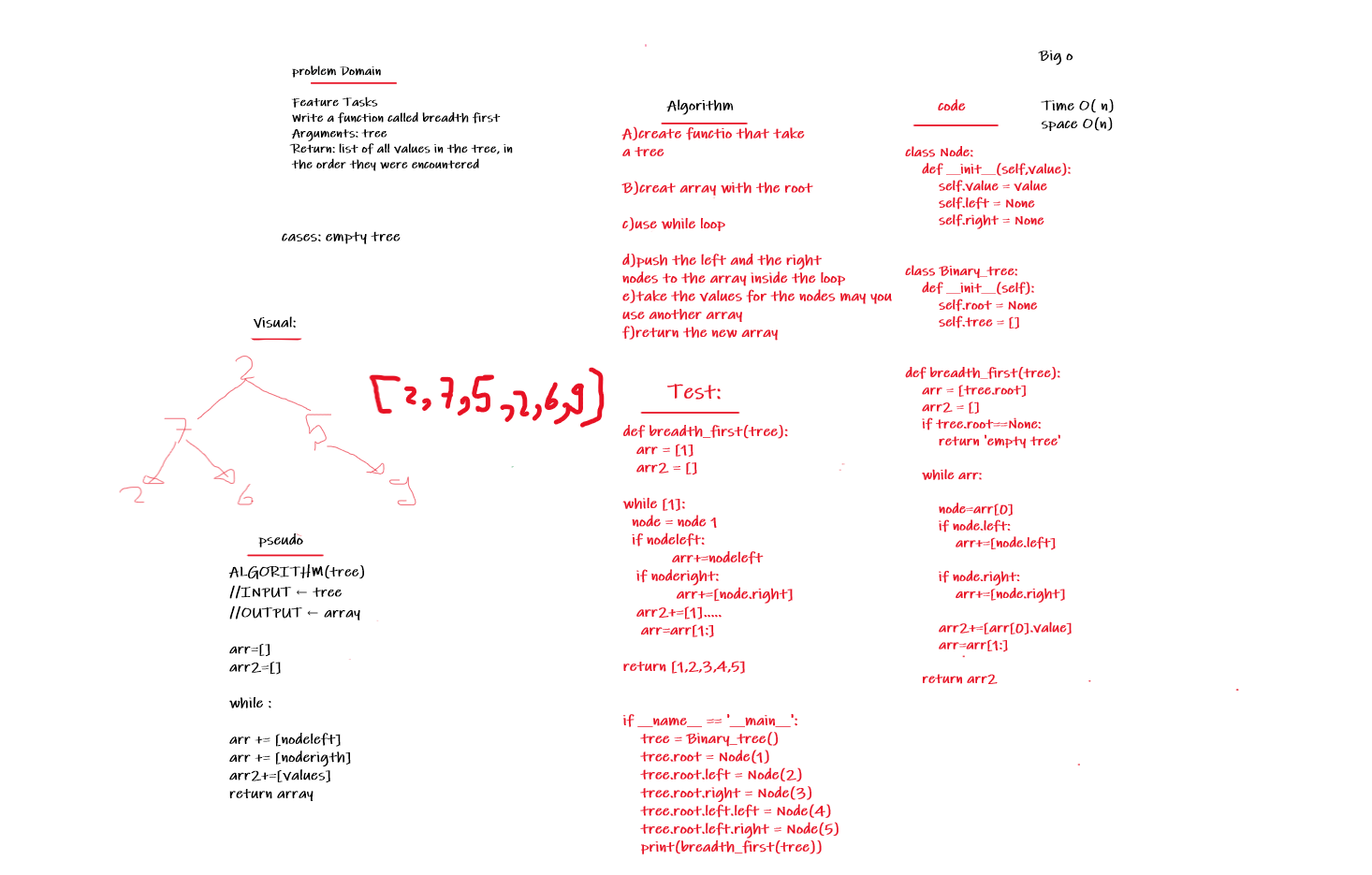Trees
Trees are non-linear data structures that represent nodes connected by edges. Each tree consists of a root node as the Parent node, and the left node and right node as Child nodes.
Challenge
Write a function called breadth first Arguments: tree Return: list of all values in the tree, in the order they were encountered
Whiteboard Process:

Solution:
class Node:
def __init__(self,value):
self.value = value
self.left = None
self.right = None
class Binary_tree:
def __init__(self):
self.root = None
self.tree = []
def breadth_first(tree):
arr = [tree.root]
arr2 = []
if tree.root==None:
return 'empty tree'
while arr:
node=arr[0]
if node.left:
arr+=[node.left]
if node.right:
arr+=[node.right]
arr2+=[arr[0].value]
arr=arr[1:]
return arr2
if __name__ == '__main__':
tree = Binary_tree()
tree.root = Node(1)
tree.root.left = Node(2)
tree.root.right = Node(3)
tree.root.left.left = Node(4)
tree.root.left.right = Node(5)
print(breadth_first(tree))
Approach & Efficiency
The Big O time complexity for inserting a new node is O(n). Searching for a specific node will also be O(n). Because of the lack of organizational structure in a Binary Tree, the worst case for most operations will involve traversing the entire tree. If we assume that a tree has n nodes, then in the worst case we will have to look at n items, hence the O(n) complexity.
The Big O space complexity for a node insertion using breadth first insertion will be O(w), where w is the largest width of the tree. For example, in the above tree, w is 4.
A “perfect” binary tree is one where every non-leaf node has exactly two children. The maximum width for a perfect binary tree, is 2^(h-1), where h is the height of the tree. Height can be calculated as log n, where n is the number of nodes.
Code Link:
API
I use this methods and functions:
input:tree
return : array with breadth first order for the tree
big o(n) space and time